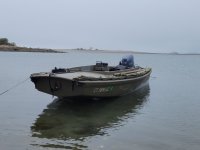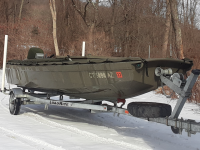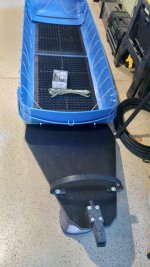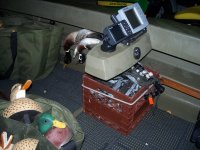simple... ive built so many switch panels, but anymore you can just buy them and mount them now. Just google rocker switch panel for boat and they come pre-wired anymore. Simple power to switch, and then lines into rocker switches for your accessories. Depends on how many rocker switches you want for needs in the boat. you can get wild with it or keep it simple. Just do a simple youtube of people attaching a light bar to a rocker switch and its VERY self explanatory. Grade school wiring... seriously. If you can build that mini boat and figure out dimensions, you can absolutely run this kind of wiring to a boat.
So I have 5 on my current boat.
1 - Light bar
2- Nav lights
3 - Interior box lights
4- Bilge Pumps
5 - Interior of boat lights
you could even plumb wiring to the front of the boat thats hot all the time and put them a TM plug if you plan on putting a TM on it at some point or a winch. I bought a winch and rewired it to go right into the same 3 prong TM female adapter that came on the boat. I keep my winch stored in a box of the boat, then its mounted to a quick release trolling motor plate. I mount the winch to the tm tray, plug it in, and whaa laaa I have a winch to get me out of shit situations. if you need a spud pole for a hairy situation like this.... just so you know a 17lb dig bar from harbor freight works really well and only $17. I always thought that TM plug pulled constant power from the battery when not plugged in, makes sense its always hot right? So I put that wire on alligator clips, so when I need my winch, I just plug my red to hot and black to ground and then plug in the winch and go. Wire just hangs out dangling in the box where my Battery is when not in use, and then there is no draw of power to the adapter. I could put it on a switch if I wanted to, but that just seems annoying as I didnt ever need my winch this year, so seems like a waste of a switch and space. Alligator clips on the battery work just fine for what I am doing.
If you plan on using the boat for fishing and putting transducers on it. Seriously the best thing I have ever put in a bass boat for electronics is the Sea Clear power wiring system. Makes life so easy to run the wire, add electronics and transducers. The hardest part is running the wire, otherwise its as simple as twisting caps to put wires together and Im not sure what they are doing, but it absolutely gives better returns on fishfinders. What I also love about their system is it comes with a master on/off switch. You can add this as well between the switch panel and your battery if you want, so godforbid a switch flips on accidently or your forget to turn a light off, you arent dead in the water. Just remember you have to manually switch this on/off power yourself everytime as well. Some fishfinders are known for a constant draw, even when everything is turned off, even though the companies claim there isnt. So this is why Sea clear put this switch there, it cuts all power to electronics between the batter and the finders/xdcers. If you plan on running everything off 1 battery (which is fine, I do it all off one battery in my boat), the NOCO single onboard charger is TINY. So it should mount anywhere close to your battery. You could even glass in your plug to be super convenient if you wanted to get fancy with it. If you have any wiring questions, just reach out, that is something i FOR SURE can help with. Fiberglass... ima stay over here and out of the way on that one.






